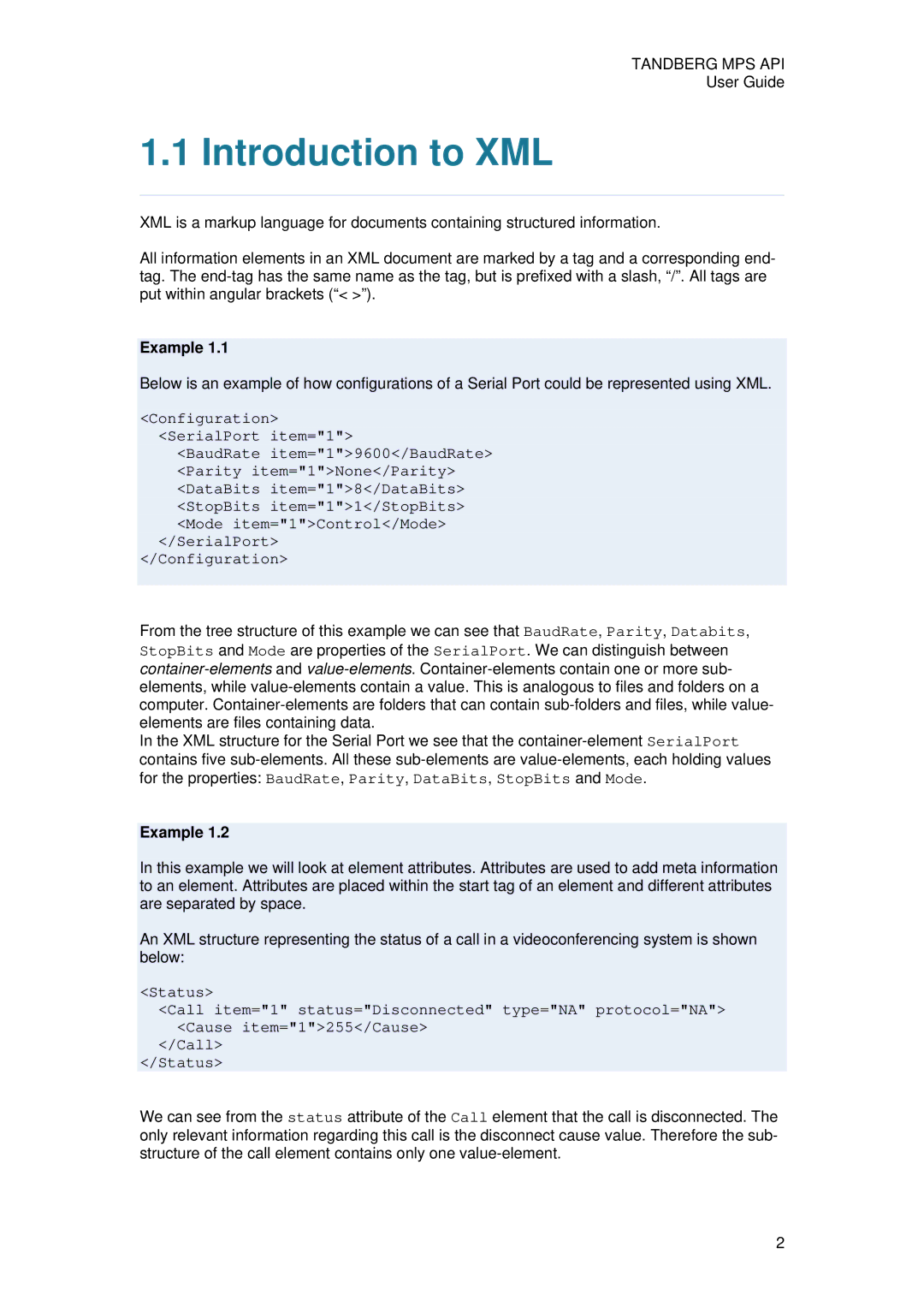
TANDBERG MPS API
User Guide
1.1 Introduction to XML
XML is a markup language for documents containing structured information.
All information elements in an XML document are marked by a tag and a corresponding end- tag. The
Example 1.1
Below is an example of how configurations of a Serial Port could be represented using XML.
<Configuration> <SerialPort item="1">
<BaudRate item="1">9600</BaudRate> <Parity item="1">None</Parity> <DataBits item="1">8</DataBits> <StopBits item="1">1</StopBits> <Mode item="1">Control</Mode>
</SerialPort>
</Configuration>
From the tree structure of this example we can see that BaudRate, Parity, Databits, StopBits and Mode are properties of the SerialPort. We can distinguish between
In the XML structure for the Serial Port we see that the
Example 1.2
In this example we will look at element attributes. Attributes are used to add meta information to an element. Attributes are placed within the start tag of an element and different attributes are separated by space.
An XML structure representing the status of a call in a videoconferencing system is shown below:
<Status>
<Call item="1" status="Disconnected" type="NA" protocol="NA"> <Cause item="1">255</Cause>
</Call>
</Status>
We can see from the status attribute of the Call element that the call is disconnected. The only relevant information regarding this call is the disconnect cause value. Therefore the sub- structure of the call element contains only one
2
